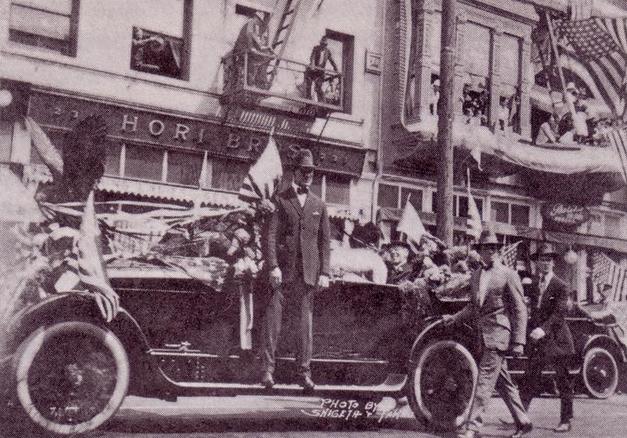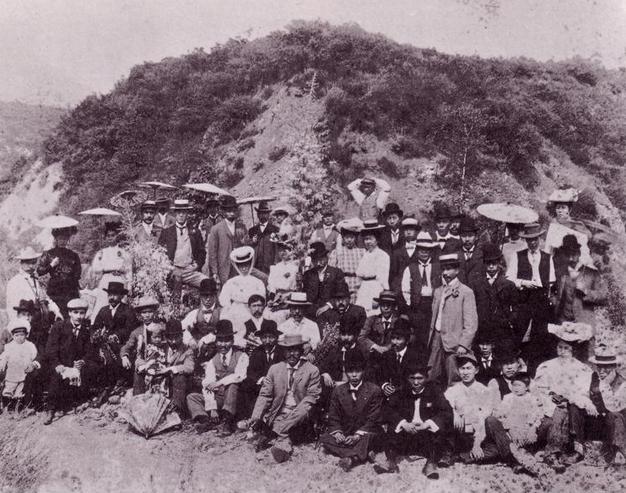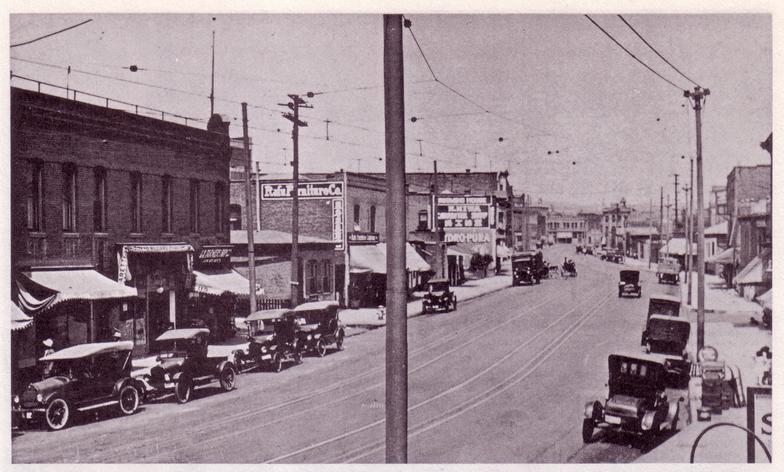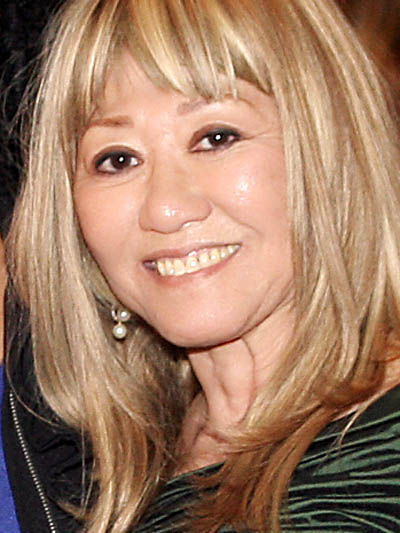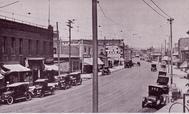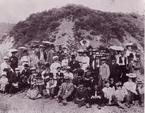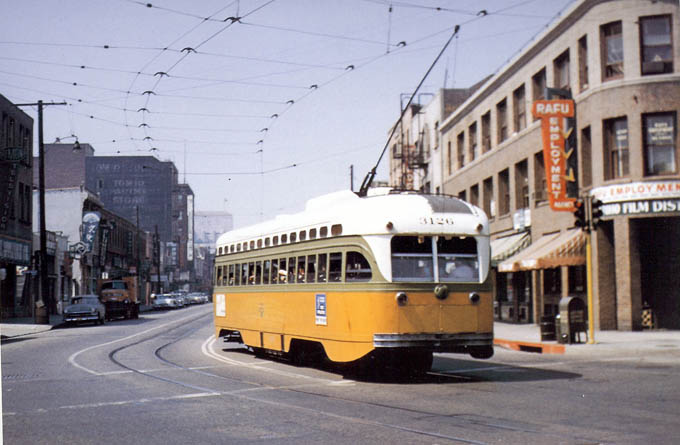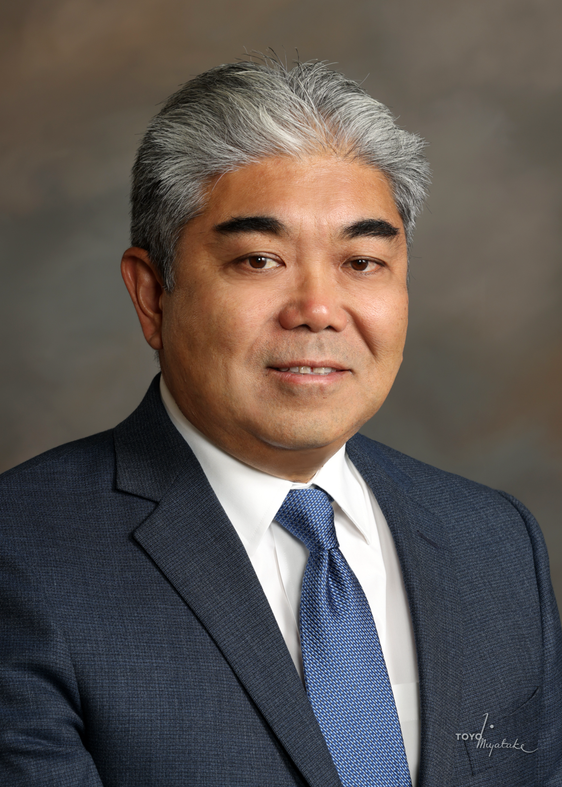Welcome to Little Tokyo
Little Tokyo Business Association
Little Tokyo Property & Business Improvement District
About LTBA
Founded in 1959, the Little Tokyo Business Association (LTBA) is a 501(c)(4) nonprofit organization dedicated to the growth and development of Little Tokyo as a vibrant, diverse and multi-faceted district of Downtown Los Angeles.
LTBA's roots can be traced to as early as 1890, when a group of immigrants from Japan formed the "Japanese Association of Los Angeles." By 1908, over 40 businesses were established along a two-block stretch of East First Street between Los Angeles Street and Central Avenue.
Despite passage of the Exclusion Act of 1924, which restricted immigration from Asia, Little Tokyo began to thrive. The Japanese Association became the leading community organization and served as the local arm of the San Francisco-based Japanese Consulate until 1915.
In 1934, a group comprised of English-speaking second-generation Nisei, approached the Japanese Association with the idea of a festival to stimulate interest among the younger generation, and Nisei Week was born.
L.A. Mayor Sam Yorty established the Little Tokyo Community Development Advisory Committee in 1969, with LTBA members taking active roles.
Frances Hashimoto-Friedman was elected president in 1994 and
became the LTBA's
longest-serving chief officer,
holding the post until 2008.
She remained a guiding force
in the organization until her
passing in November 2012.
An innovative businesswoman,
Hashimoto is credited with introducing mochi, a traditional Japanese pastry, into the national American market.
In July 2003, LTBA won approval from the Los Angeles City Council to establish a merchant-based Business Improvement District (BID) in Little Tokyo. Around the same time, BIDs were established throughout the City in response to the need for a system that would ensure basic services, such as cleanup, safety patrols, and marketing. However, all other BIDs set up in the Downtown area are property-based and financed by assessing fees to property owners.
Today, there are more than 400 businesses operating in Little Tokyo.
141 Years of History
PRESIDENT WOODROW WILSON VISITS LITTLE TOKYO IN THE 1920s.
EARLY MEMBERS OF THE JAPANESE ASSOCIATION OF LOS ANGELES, PREDECESSOR OF TODAY'S LITTLE TOKYO BUSINESS ASSOCIATION, GATHER FOR A FAMILY PICNIC IN 1914.
Japanese began emigrating to the U.S. following the political, cultural and social changes resulting from the 1868 Meiji Restoration. Following the passage of Chinese Exclusion Act of 1882, Japanese laborers were sought to replace the Chinese. The 1907 “Gentlemen's Agreement” between the United States and Japan, closed immigration for most Japanese, except for business and professional men. The enactment of the Immigration Act of 1924 further limited immigration into the U.S.
Little Tokyo is one of four remaining historic
Japantowns in the United States. The
other two are in San Francisco and San
Jose. At its peak, Little Tokyo had a
population of approximately 30,000.
However, when the outbreak of WWII led
to the unjust forced removal of all persons
of Japanese ancestry from the West
Coast, Little Tokyo became a virtual
ghost town.
As WWII progressed, a labor shortage
in Los Angeles spurred migration of
African Americans to the City from other
parts of the country. Faced with restrictive
housing convenants, African Americans
began moving into abandoned Little Tokyo properties, and the area soon became to be known as "Bronzeville."
After the war, Japanese Americans returning from the camps moved into areas surrounding the downtown area. By the 1950s, many Japanese Americans had established homes in nearby Boyle Heights. In 1959, symbolic of the new ties with Japan, the City of L.A. entered into a sister city relationship with Nagoya, leading to the formation of the L.A.-Nagoya Sister City Association. As a result, LTBA has a long-standing bond with its counterpart in Japan, PURE O2 (Minami Otsu Dori Shoten Gai Shinko Kumiai). The relationship has furthered international goodwill and understanding not only between the two organizations and the two cities, but also between Japan and the United States.
In the 1970’s and through the 1980’s, Japanese banks and corporations from overseas made L.A. their U.S. headquarters, resulting in a surge of development in Little Tokyo. New shopping centers, hotels, and Japan.
Today, Little Tokyo is a thriving, trend-setting work, cultural, religious, restaurant, and shopping district with new housing and a growing residential population.
Frances Hashimoto
LITTLE TOKYO IN THE 1920s
LITTLE TOKYO CHRONOLOGICAL HISTORY
1884 – An ex-seaman, Hamanosuke Shigeta (aka Charlie Hama), established the first business, Kame, a small restaurant/café on First Street in a section of downtown Los Angeles that would eventually become “Little Tokyo.”
1897 – Around the turn of the century, the Japanese Association of Los Angeles was formed, consisting mainly of Issei (Japanese immigrant) business owners. By 1908, over 40 businesses were operating along the two-block stretch between Los Angeles Street and Central Avenue. The Association became the Japanese community’s leading organization and, until 1915, functioned as the local arm of the San Francisco-based Japanese consulate.
1924 – Despite passage of the Immigration Act of 1924, a U.S. federal law that banned Asians and severely restricted other nationalities from entering the United States, Little Tokyo began to thrive.
1934 – The American-born Nisei (second generation Japanese Americans) were coming of age. Concerned that the younger, English-speaking generation was assimilating and might drift away from their culture, members of the Downtown Japanese American Citizens League approached the Japanese Association with the idea for a week-long festival dedicated to the youth, and Nisei Week was born. The Downtown JACL Professional and Business Association, a forerunner of the Little Tokyo Business Association, was formed to guide the festival. August 2016 will mark the 76th Nisei Week Festival.
1941 – The Pearl Harbor attack on Dec. 7, 1941 and subsequent declaration of World War II led to the forced removal of 120,000 persons of Japanese ancestry from the West Coast. Most were held in American concentration camps until the war ended in the fall of 1945. The former internees gradually began to return after the war and resettled.
1947 – LTBA re-emerged to help rebuild and revitalize Little Tokyo. Around the same time, a new organization, the Los Angeles Japanese American Association was formed in September 1947 with the goal of helping to protect persons of Japanese ancestry.
1949 – The Downtown JACL Professional and Businessmen’s Association re-established the Nisei Week Festival with the help of the community’s other organizations. Proceeds were donated to a community enter building fund.
1950 – The professional and businessmen’s component separated from the Downtown JACL and began operating as the Little Tokyo Business Association.
1951 – The Japanese American Association and Little Tokyo Businessmen’s Association merged to form the Japanese Chamber of Commerce of Southern California (JCCSC).
1957 – Chamber of Commerce president Mitsuhiko Shimizu decided to separate the functions of the Chamber and the Little Tokyo business owners, who subsequently became known as the Little Tokyo Merchants Association.
1959 – The Merchants Association became a California 501(c)(4) nonprofit corporation under the name, Li’l Tokyo Businessmen’s Association, and continued to work closely with the Chamber of Commerce to convince government officials to re-zone the area allow for residential and other uses.
1970 – The Little Tokyo Redevelopment Project, administered by the Community Redevelopment Agency, was adopted by the Los Angeles City Council. The 67-acre project includes the historic north side of First Street (from Judge John Aiso Street to Central Avenue), which is listed in the National Register of Historic Places. Mayor Sam Yorty officially established the Little Tokyo Community Advisory Committee with LTBA members taking active roles to protect the interests of local merchants.
1984 – In commemoration of the area’s 100th anniversary, LTBA commissioned Visual Communications and project coordinator Mike Murase to organize and curate a collection of photographs depicting Little Tokyo’s history. Publishing and distribution costs were underwritten by LTBA for the book, entitled 100 Years of Little Tokyo in Photographs.
2003 – The Los Angeles City Council passed an ordinance establishing the merchant-based Little Tokyo Business Improvement District (LTBID), authorizing the City to assess local businesses for safety, marketing, maintenance, and administrative services. LTBA was designated to manage the program, which continues to operate today, serving Little Tokyo’s approximately 430 businesses.
2025 - On July 1, following nearly three years of outreach to property owners in the Little Tokyo community and vote which garnered approval from stakeholders representing 87percent of Little Tokyo property, the Little Tokyo Property & Business Improvement District (LTPBID) was established by unanimous vote of the Los Angeles City Council, City Ordinance 188677 authorizing the new PBID was signed by Mayor Karen Bass.
Today, LTBA continues to work toward the betterment of the Little Tokyo community by managing the Little Tokyo PBID, supporting community events, working closely with government officials, and articulating the needs and concerns of Little Tokyo stakeholders.
A Message
from LTBA
President
David Ikegami
Dear Friends,
I am pleased to report that on July 1, 2025, the Los Angeles City Council voted unanimously to approve the establishment of a property-based Business Improvement District (BID) for Little Tokyo. This means that we can begin to fulfill our long-held vision for a community that has a cleaning staff available seven days a week and a safety ambassador program that operates 24 hours a day and seven days a week.
Our merchants, property owners, workers, and residents were called upon to adapt quickly to a post-pandemic environment, which presented its own set of challenges, but our collective commitment to a better Little Tokyo remained strong.
Personally, I am humbled by the sense of community that I encounter every day. I am also grateful for our LTBA board members and the Little Tokyo Business Improvement District co-chairs and advisors, all of whom are volunteers.
Working alongside the LTBA Foundation (dba Little Tokyo Legacy Foundation), we continue to take on new programs and delve into the issues that we feel will have lasting impacts on our community. These issues include business assistance, clean and safe programs, cultural enrichment, community care for the unhoused, advocacy, and interface with government agencies and representatives.
I wish to thank everyone for their support and encouragement, and I pledge to continue to working to strengthen and enrich Little Tokyo.
DAVID IKEGAMI

